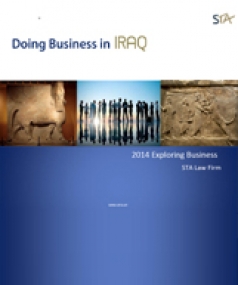Insolvency Regulations in Kuwait
 Kuwait is the most recent GCC nation to alter its bankruptcy laws. Kuwait modified its insolvency code in October 2020, enacting the long-awaited Bankruptcy Law (Kuwait Law Number 71/2020). This legislation emphasizes bankruptcy processes designed to maximize a debtor's worth for the profit of creditors and offer debtors the opportunity to resume pre-bankruptcy privileges if a bankruptcy judge is discharged. Lawful and judicial advancements during the last 40 years, practical application of the Financial Stability Law, Kuwait Law Number 2/2009, and the state's strategy to improve its current business environment in order to convert Kuwait into a regional financial capital have all been taken into account in this new piece of legislation, according to the explanatory memorandum to the Law.
Kuwait is the most recent GCC nation to alter its bankruptcy laws. Kuwait modified its insolvency code in October 2020, enacting the long-awaited Bankruptcy Law (Kuwait Law Number 71/2020). This legislation emphasizes bankruptcy processes designed to maximize a debtor's worth for the profit of creditors and offer debtors the opportunity to resume pre-bankruptcy privileges if a bankruptcy judge is discharged. Lawful and judicial advancements during the last 40 years, practical application of the Financial Stability Law, Kuwait Law Number 2/2009, and the state's strategy to improve its current business environment in order to convert Kuwait into a regional financial capital have all been taken into account in this new piece of legislation, according to the explanatory memorandum to the Law.
Kuwait's insolvency structure has been entirely revised by Law Number 71 of 2020 regulating insolvency law (the "New Insolvency Law"). It provides enterprises in financial distress with more flexible options. It allows for rehabilitation, "rescue packages," as well as other initiatives to keep a company from going bankrupt or liquidating prematurely. This is especially crucial when a company is fails to meet its obligations but can rebound in the benefits of major stakeholders.
Scope and Application
The Bankruptcy Law lists the persons to whom the law's provisions apply, with the exclusion of joint venture firms and collective investment schemes (which includes every natural person, trader, Kuwaiti companies, and branches of foreign companies). The Central Bank of Kuwait and the Capital Markets Authority have the authority under Kuwait's Bankruptcy Law to establish guidelines regarding the preventive settlement. Processes, restructuring, and insolvency for securities exchange, clearing agencies, central depository institutions, central brokers, banks, and insurance organizations, in ways that may depart from the Bankruptcy Law and in accordance with the nature of these firms' requirements.
The Bankruptcy Law calls for the formation of a Financial Restructuring Committee ('Committee'). With the assistance of one or more Committee-appointed specialists, the Committee's function is to oversee the administration of restructuring operations in order to facilitate consensual restructuring solutions between a debtor and its creditors (if appropriate). The Committee will also keep track of insolvencies, authorize expert costs, and maintain a list of insolvency specialists who will assist the courts in determining the grounds for and carrying out the bankruptcy procedure of choice (as described in more detail below).
The objective of Insolvency Law
 Some aspects of the New Insolvency Law are similar to those of the Financial Stability Law of 2009, which supersedes and improves. The Amended Insolvency Law aims to identify ways to maintain a company's "going-concern" value by providing alternatives to liquidation. It is based on the notion that enterprises in financial trouble can be more beneficial to all stakeholders if they can find a method to keep them operating. This New Insolvency Law allows for recovery while ensuring that the corporation and its creditors are protected by court involvement.
Some aspects of the New Insolvency Law are similar to those of the Financial Stability Law of 2009, which supersedes and improves. The Amended Insolvency Law aims to identify ways to maintain a company's "going-concern" value by providing alternatives to liquidation. It is based on the notion that enterprises in financial trouble can be more beneficial to all stakeholders if they can find a method to keep them operating. This New Insolvency Law allows for recovery while ensuring that the corporation and its creditors are protected by court involvement.
Organizations face difficulties at any time due to external circumstances beyond their power. There might be a window of time to study the situation and identify professional remedies to protect the company in the short term. Creditors calling in their debts and other shareholders may have competing interests. The new legislation establishes a procedural structure to settle cases quickly. This is accomplished by incorporating substantial sections of the New Insolvency Law, such as time limits. In insolvency procedures, for example, it is specified when meetings should be held, recommendations should be given to the court for examination, and the number of days the judge should take to make a judgment on the rescue ideas.
Implementation Operational and Administrative Framework
The New Insolvency Law establishes a bankruptcy court and several obligations to carry out the insolvency procedures to boost confidence in each of them.
- The Revised Insolvency Law establishes a specialized bankruptcy court (the "Bankruptcy Court") with sole jurisdiction over issues emerging under the law and the competence to deliberate on requests made to it in line with its requirements. The CMA appoints auditors to assist the Bankruptcy Court. These experts serve the Bankruptcy Court by providing professional views on a bankruptcy action's financial, accounting, and economic aspects.
- In the event of a financial reorganization or bankruptcy process, one or more bankruptcy trustees, either natural or legal people (e.g., businesses), are designated. In the instance of a preventative settlement, no bankruptcy trustee is appointed. When the bankruptcy commission approves a company's application for financial restructuring or liquidation, it assigns a bankruptcy trustee. A trustee must be either a CMA-licensed auditor or a registered auditor. The bankruptcy commission may recommend that the Bankruptcy Court select a non-CMA accredited individual or an unregistered auditor in rare circumstances. On the other hand, the Bankruptcy Court has the authority to approve or reject the commission's recommendation. In any case, such an appointment requires the consent of the Bankruptcy Court.
- A bankruptcy commission is established by the Ministry of Commerce and Industry, consisting of at least three members who are qualified to act as bankruptcy trustees. Experts in finance, Law, and economics may be included in the commission. The commission is responsible for overseeing some business debts. All examples are listed company debts, collective investment plans, CMA or Central Bank controlled entities, and state-owned companies. The commission will consider insolvency applications and accompanying documentation submitted by any preceding companies throughout the bankruptcy proceeding and render an opinion. Appointing bankruptcy trustees and deciding their salary are among the other responsibilities.
- A high-ranking judge oversees the bankruptcy department, which is part of the judiciary. Supervising insolvency procedures, monitoring the company's funds and business management, guaranteeing timely filings, and analyzing requests according to the New Insolvency Law are responsibilities.
- The Bankruptcy Court may appoint a supervisor on its initiative or respond to requests from a concerned creditor or the bankruptcy committee. The supervisor would keep an eye on the insolvency proceeding, along with the preventative settlement, as it progressed. The supervisor will produce a report on the status of the insolvency action if requested.
- The Bankruptcy Court may appoint an investigator on its initiative or in response to a request by a concerned creditor, supervisor, supervisor, bankruptcy trustee, or bankruptcy commission. The investigator will scrutinize the bankruptcy trustee's or distressed company's actions.
Penalties
 In the event of concealing the books or misappropriating part of the company's money, the Bankruptcy Law increases the debtor's punishment from three to five years and the fine from 30,000 (USD 98,000) to 100,000 Kuwait Dinars (USD 327,000) or one of these two penalties. If, after the issuance of a final decision to open the bankruptcy procedures, the chairman and members of the company's board of directors, its directors, the auditors of its accounts, and those in charge of liquidating, they concealed the company's books or embezzled any of the bankrupt company's money, they shall be punished with imprisonment for a period not exceeding five years and a fine not exceeding one hundred thousand Kuwaiti Dinars or either of these two penalties.
In the event of concealing the books or misappropriating part of the company's money, the Bankruptcy Law increases the debtor's punishment from three to five years and the fine from 30,000 (USD 98,000) to 100,000 Kuwait Dinars (USD 327,000) or one of these two penalties. If, after the issuance of a final decision to open the bankruptcy procedures, the chairman and members of the company's board of directors, its directors, the auditors of its accounts, and those in charge of liquidating, they concealed the company's books or embezzled any of the bankrupt company's money, they shall be punished with imprisonment for a period not exceeding five years and a fine not exceeding one hundred thousand Kuwaiti Dinars or either of these two penalties.
Conclusion
The New Insolvency Law corrects inconsistencies that existed under the prior bankruptcy system. Earlier, stockholders and creditors were left in the dark about their rights and responsibilities if their investment went bankrupt—this stifled economic growth, particularly in the SME sector. The New Insolvency Law aims to create a debt collection process while also boosting the chances of a company's recovery. Since liquidation is no more the only option for a company in financial trouble, the law strives to walk a fine line between creditor protection and the ability for businesses to continue operating.
However, the new legislation's success will be determined by how it is applied in practice. The inability of troubled enterprises to raise capital to continue their operations is a persistent issue. Kuwait may want to consider providing priority financing, in which approved lenders' restructuring loans take precedence over other business debts.
 English
English
 عربي
عربي Русский
Русский 官话
官话 português
português
 Türk
Türk 
















